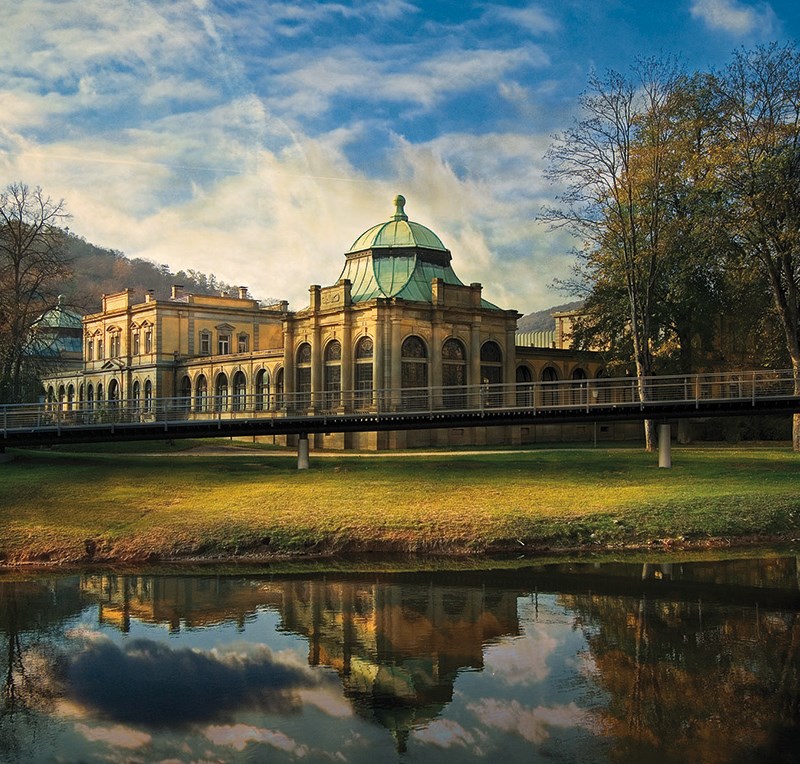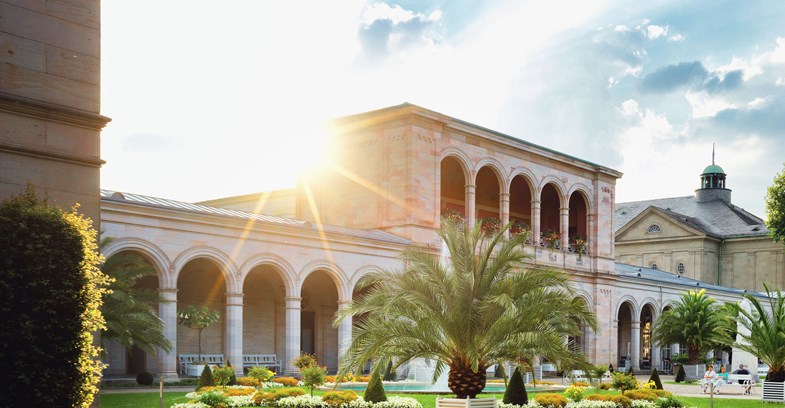Bad Kissingen, GERMANY: Between Classicism and Modernity
Bad Kissingen, the Bavarian ‘Great Spa’ that bridges nineteenth century neoclassicism and modernity, is outstanding for the reform era of the early twentieth century. Architect Max Littmann built and rebuilt almost the entire spa in exceptional architecture using innovative forms and materials; the Wandelhalle pump room is the largest structure of its kind in the world. Development took place outside the medieval walled town, guided by the cluster of springs, the Saale River, and the oldest formal spa garden outside an urban context, all making a seamless transition into parks and wooded hills. Internationalism increased from 1874 with visits by German Imperial Chancellor Otto von Bismarck. His living quarters are preserved at the Upper Saline, part of a second spa quarter distinguished by early industrial-scale facilities for the production of brine, an important feature of European spas. Health tourism remains vibrant in this ‘Great Spa’.

Grüner Saal

Historic Urban Landscape of the ‘Great Spa’
The spatial plan of the nominated property can be divided into:
- The principal spa district , immediately to the south of the old town and on both banks of the river, with its cluster of springs and spa ensemble (including the great Luitpoldbad, Wandehalle and pump rooms), and structures for leisure and pleasure, (including kursaals, colonnades, Kurgarten, theatre and casino).
- The northern spa quarter, around 2km north of the old town with its early technical brine facilities of the Upper and Lower Saline.
- The chain of parks and promenades that follow the Saale.
- The town with sanatoria and spa accommodation including guesthouses and grand hotels, together with churches and mansions.
- The surrounding therapeutic and recreational spa landscape with riverside promenades, forested walks and overlooks (in the west), together with racecourse/airfield, tennis and golf.
- The cluster of sap infrastructure in the south (including the Former Abattoir).

